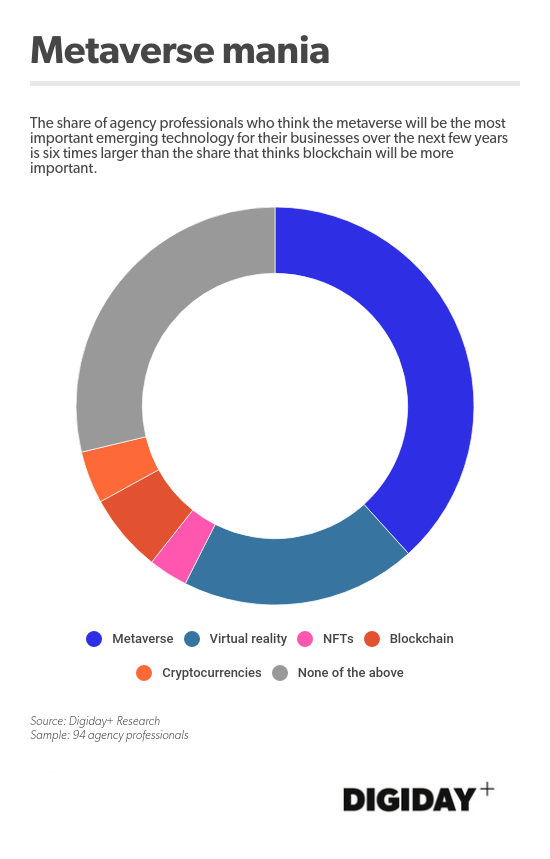Digiday Guide: How publishers and marketers can use the blockchain in their businesses
To many media and marketing executives, the blockchain still feels like a mystical part of the internet happening apart from where they do business. But the reality is more and more companies are using blockchain technology to make money, solve business problems and reach new audiences and customers.
In fact, you may have heard the term “blockchain” in a recent business meeting or come across it more than once while scrolling on Twitter. But beyond knowing it’s the technology behind non-fungible tokens (NFTs) — such as, digitized versions of magazine covers auctioned off for hundreds of thousands of dollars’ worth of cryptocurrency — you may not know why or how the blockchain can impact, and even benefit, your business.
NFTs are becoming increasingly demystified, and companies are beginning to hold cryptocurrencies on their balance sheets. As a result, the blockchain is weaving itself into the way companies do business, so knowing what it is and how it works, even at a high level, will help industry leaders become more proactive and receptive to these innovations, ultimately leading to a better chance at revenue diversification and growth over the course of this new decade.
The fact of the matter is, the revenue possibilities from both publishers’ and marketers’ experimentations on the blockchain are not limited to selling NFTs to the highest bidder. Many of the challenges and questions companies have about the state of the media, marketing and advertising industries and the way they do business can be solved with blockchain technology — if they are willing to experiment.
So by now, you may be wondering: WTF is the blockchain?
Allow me to explain …
- Blockchain: A system for recording, authenticating and verifying transactions or agreements using a network of computers or people. It is not controlled by any one company or institution.
- Consensus algorithm: A process used to legitimize and verify actions performed on the blockchain.
- Cryptocurrency: Often referred to as “crypto,” a digital coin that stores value.
- Decentralized: The blockchain is not regulated by a central authority, making it a decentralized system.
- Metaverse: A digital version of the physical world that echoes video games like “The Sims” or “Second Life” but at a larger, more immersive scale. (Read more about the metaverse here.)
- NFT: Short for “non-fungible token,” a certificate of ownership for a digital good, such as an image or song, that cannot be duplicated. (Read more about NFTs here.)
- Proof of stake: A type of consensus algorithm, in which an individual serves as a “validator” to record, authenticate and verify actions performed on the blockchain. The validator is required to put up collateral in the form of cryptocurrency and loses that collateral if they are caught falsifying information or acting maliciously.
- Proof of work: A type of consensus algorithm that relies on a network of computers, called “nodes,” to run, record, authenticate …read more
Source:: Digiday





